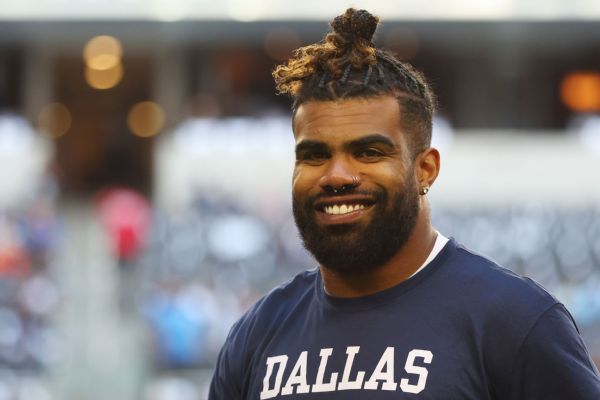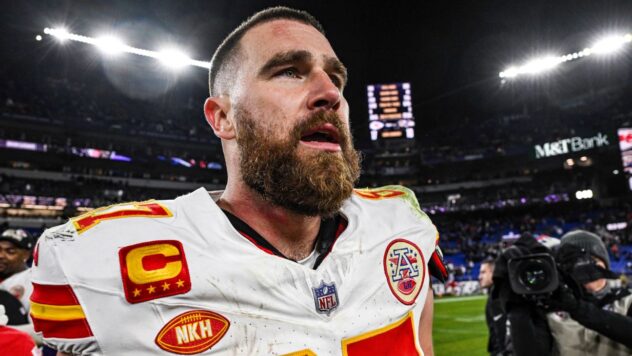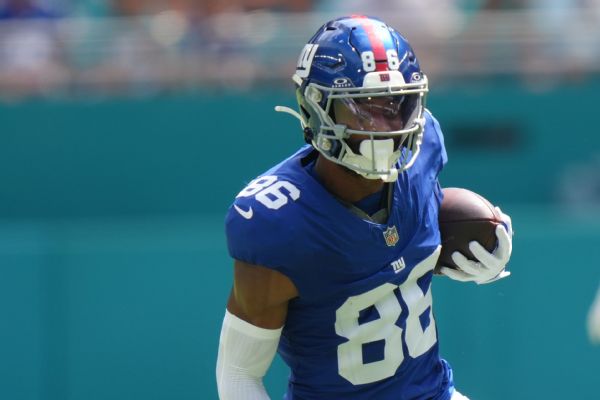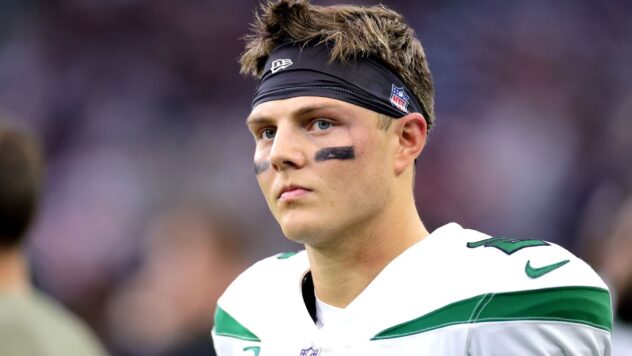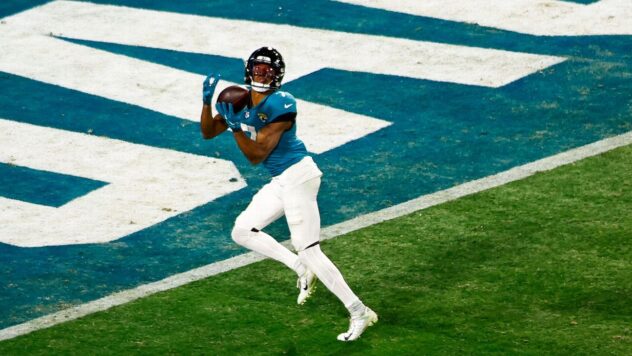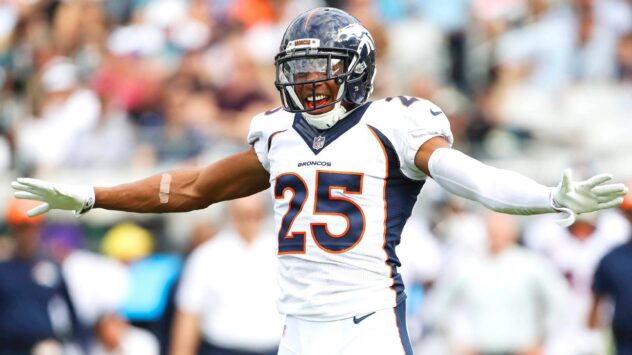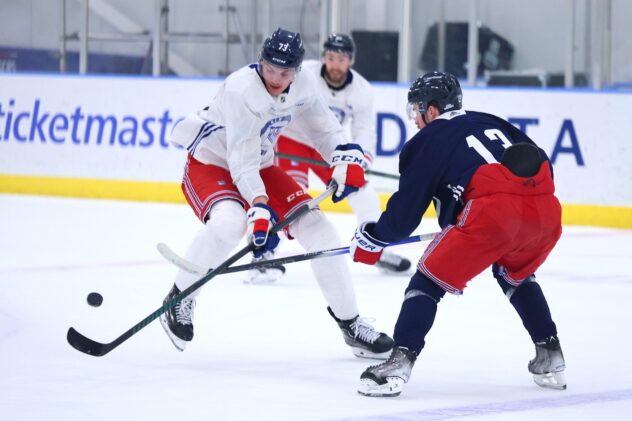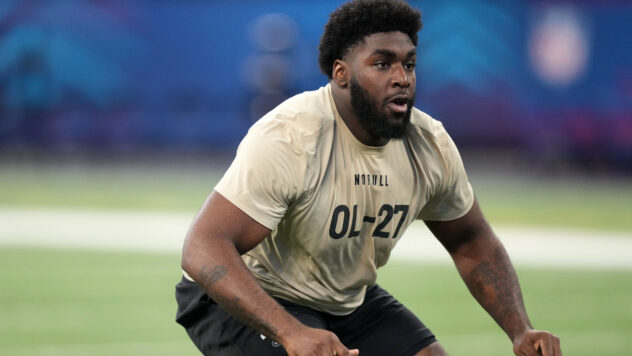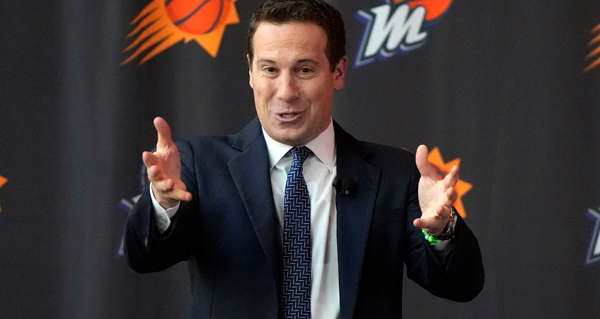How trading Stefon Diggs became a massive win-win for Bills, Vikings

The Minnesota Vikings had a star receiver who wanted out. The Buffalo Bills had a promising quarterback who needed help. Everything about the 2020 trade that sent Stefon Diggs and a seventh-rounder to the Bills for four draft choices made sense.
What followed next, however, could prove to be a rare turn in NFL history.
The Vikings used one of the picks they acquired from the Bills, the No. 22 overall that spring, to draft a worthy replacement in Justin Jefferson. And from that moment, Diggs and Jefferson have been two of the best receivers in football. Diggs ranks No. 1 in ESPN’s Receiving Tracker Metric (RTM) since the start of the 2000 season. Jefferson ranks No. 3.
Should Diggs and Jefferson continue along this path — a reasonable projection given their ages at 28 and 23, respectively — the Bills-Vikings trade would join a small group of NFL deals that directed multiple Hall of Fame-caliber players to their respective teams. As the two receivers prepared to see each other on in a non-Pro Bowl game for the first time Sunday at Highmark Stadium (1 p.m. ET, Fox), Jefferson said: “It was a huge win-win and there’s not too many of those.”
Indeed, it’s more common for NFL trades to have clear winners and losers. When the Vikings shipped receiver Randy Moss to the then-Oakland Raiders in 2005, they used the pick they received (No. 7 overall) to draft Troy Williamson as his replacement. Williamson was a bust (1,131 career yards in five seasons), and the Vikings went without a 1,000-yard receiver for 11 of the next 13 seasons.
But Jefferson has led the league in receiving yards (3,883) since his rookie season in 2020 and has caught the fifth-most passes (255). Diggs has produced the second-most receptions (290) and the fourth-most yards (3,617 over that period), all while helping quarterback Josh Allen ascend to the top of NFL quarterback rankings.
This season, both have found themselves in a receiver’s dream. The Bills and Vikings feature two of the most pass-happy offenses in the league. The Bills lead the NFL in attempts when games are within one score (175). The Vikings rank fourth (156).
“Stef fit us well,” Bills general manager Brandon Beane said of the deal. “The timing was good of where we were in our build of this team, and they got a fresh piece in Justin Jefferson, who’s very talented and has jumped right in there and been one of the best receivers in the league. So, that’s probably as win-win, as you would find.”
IN THE SUMMER of 2018, Diggs signed a five-year contract extension with the Vikings just as they looked poised to embark on perhaps the most pass-happy period in franchise history. They threw more passes in the first 13 games of that season (524) than in any similar stretch before or after, but the shift was so disagreeable to former coach Mike Zimmer that he fired offensive coordinator John DeFilippo and made clear he preferred a run-first offense.
That decision was the opening scene in the spiraling relationship between Diggs and the team. By the same point in the 2019 season, the Vikings had thrown 388 passes, a 26% drop, and Diggs had also skipped two practices and two days of meetings to incur a $200,000 fine from the team. By the spring of 2020, it was obvious that Diggs wanted out.
“I saw that coming,” receiver Adam Thielen said. “I didn’t want it to happen because I had a great relationship with Diggs and I still do to this day. I have a ton of respect for him and how he plays the game and the person he is and the teammate he was to me. I was bummed out at first, but at the same time I was happy for him. I figured he wanted a fresh start and to be somewhere else.
“And then for us to be able to get Justin in turn for that, and for him to come in right away and play at such a high level, that really made the transition a lot easier than I could have expected.”
The frequency of significant NFL trades is rare relative to the larger landscape of pro sports. Player retention rules prevented movement in the early years of the league, and salary-cap implications have limited them since that era began in 1993. Perhaps the most famous trade is the one that sent running back Herschel Walker from the Dallas Cowboys to the Vikings in 1989, but it is memorable in large part because it was so lopsided in favor of the Cowboys.
Many of the league’s most consequential trades, and thus the ones that best compare to the 2020 Bills-Vikings deal, have had two primary ingredients: A quarterback and the No. 1 overall pick in the draft.
In 1978, the Houston Oilers acquired the top pick in the draft from the Tampa Bay Buccaneers, so they could select running back Earl Campbell. In exchange, they sent a package that included the No. 17 overall pick, three other draft picks and tight end Jimmie Giles. Campbell wound up in the Hall of Fame. Giles was a three-time Pro Bowl player for the Buccaneers, and the No. 17 pick became quarterback Doug Williams — whose career in Tampa was mixed but eventually led to a Super Bowl title with Washington in 1987.
In 1983, the Baltimore Colts shipped No. 1 overall pick (and future Hall of Fame quarterback) John Elway to the Denver Broncos for a package that included offensive lineman Chris Hinton, who turned into a seven-time Pro Bowl player.
And in 2004, the then-San Diego Chargers traded quarterback Eli Manning — whom they had just drafted at No. 1 overall — to the New York Giants for No. 4 overall pick Philip Rivers and three other draft picks. Both Manning and Rivers will be in the Hall of Fame discussion when they are eligible.
Trades that feature a No. 1 receiver have not been nearly as common. According to an interview Zimmer gave at the time, the Bills-Vikings trade was consummated only because “Buffalo came in and gave us all those picks.” The Vikings used one to draft Jefferson and also netted a second starter by selecting safety Cam Bynum with the Bills’ fourth-round pick in the 2021 draft. With the seventh-rounder they received in the deal, the Bills drafted cornerback Dane Jackson. He has started 15 games in his career including seven this season, and been the top corner in Tre’Davious White‘s absence.
Jefferson and Diggs were not formally traded for each other, but the trade’s outcome could eventually merit consideration among the league’s most consequential deals.
It’s early to begin connecting Jefferson with the Hall of Fame, but he couldn’t have done much more to start the discussion at the beginning of his career. His 3,016 receiving yards from 2020-21 were the most ever for a player in his first two seasons, and his current total of 3,883 receiving yards trails only two players — Lance Alworth and Odell Beckham Jr. — through the first 41 games of a career.
Diggs might not strike NFL fans at large as a potential Hall of Fame inductee. But his statistical acceleration since joining the Bills is beginning to place him among the most accomplished players at his position in this generation, a common criteria for enshrinement. Since Diggs entered the league in 2015, only two receivers have more catches than him. Three have more yards, and four have more touchdowns.
“My time in Minnesota was amazing,” Diggs said. “I love it. I still date back to be like I had a great time in Minnesota. I don’t have any bad taste in my mouth. … It just didn’t work out.”
DIGGS DIDN’T ALWAYS want to come to Buffalo.
The Bills first contacted the Vikings about the wide receiver’s availability prior to the trade deadline in 2019. Appearing on linebacker Von Miller‘s podcast last month, Diggs said he told his agent he did not want to be traded to Buffalo at the time.
But the timing of the 2020 deal ended up being just right. It turned into such a good situation, the Bills signed Diggs to a four-year, $104 million extension with $70 million guaranteed this offseason.
As Beane pointed out, Diggs was worth giving up the picks package because of where the team and Allen were in their development.
Allen was ready to take that next step. Over his first two seasons, his accuracy and abilities as a pocket passer improved. In Year 3, his completion percentage jumped by more than 10% from 2019 to 2020 (58.8% to 69.2) and he threw 17 more passing touchdowns in an equal number of games.
That was in part thanks to having a receiver like Diggs.
“In that first year … it was just guys playing football,” Diggs said. “But now at this point, we’re not just playing football, [Allen] kind of knows me. He knows what I’m about to do. He kind of can anticipate and I can anticipate what he’s thinking, at least.”
Diggs has the most receptions by any player in their first two seasons with a team (230) and continues to set records. In 2020, he established the Bills single-season reception record (127) and became the first Bills player to lead the NFL in catches and receiving yards (1,535).
He is without a doubt Allen’s go-to target, but he has also developed into one of the offense’s leaders. In both 2021 and 2022, Diggs has been named a team captain and he is often seen on the sideline pumping up his teammates.
“Stef has done a phenomenal job of changing the culture, or helping change the culture,” coach Sean McDermott said. “His competitive nature — his ability to put the team first at a position that is not always know for that — I think goes a long way in our locker room and us, in terms of the team that we’ve become. I think he’s got a great dynamic with Josh on and off the field, and a lot of the other players in our locker room as well.”
What makes his connection with Allen so special? The pair can communicate so well on the field. Diggs has allowed the Bills’ offense to stretch the field with 14 touchdown receptions off vertical routes since 2020, tied for the second-most in the league.
“The best receivers in the league give great body language, they give great eyes. And what Stef does I think better than anybody in the league, are his hands,” Allen said. “How late he can keep his hands like in a full sprint, look back and see the ball coming in, and extend his arms as late as possible, whether it’s in front of him, back shoulder ball. He’s a master at his craft and I’m very fortunate that I get to play with a guy of his caliber because he’s making everybody on our team better.”
IT DIDN’T TAKE long for Jefferson to display his potential as Diggs’ worthy successor. Vikings quarterback Kirk Cousins remembers the moment: When he threw a deep pass his way on a third-and-17 play in Week 3 of Jefferson’s rookie season in 2020. Jefferson caught the pass 34 yards downfield, broke two tackle attempts by Tennessee Titans defenders and dashed into the end zone for a 71-yard score.
“I underthrew it a little bit and he went up and got it,” Cousins said. “And then the rest of that Titans game, I think he showed his ability, and you kind of felt like we might have an X receiver here and that it [could work out] for everyone involved.”
Jefferson finished the game with 175 receiving yards, more than all but one of Diggs’ 70 games with the Vikings.
“I feel like it’s always going to be a competition,” Jefferson said, “because he left from here and I replaced him. But I’m definitely happy that he’s doing a good job where he went, too.”
Jefferson did his job with a much smaller financial commitment. The Bills have paid Diggs roughly five times the $10.7 million Jefferson has received from his standard rookie contract. The Vikings will eventually need to give Jefferson a massive raise, and he’s eligible for one starting after this season, but the interim value under the salary cap has allowed the Vikings to maintain the veteran core that has helped power this season’s 7-1 start.
More recently, Jefferson is benefitting from the offensive approach Diggs missed after DeFilippo’s firing. First-year Vikings coach Kevin O’Connell has focused his scheme on getting Jefferson the ball, and his targets through eight games are 19% higher than at the same point in 2021 and 57% higher than 2020. Jefferson ranks fifth in the NFL this season in receptions (59) and No. 2 in yardage (867), and after he went six consecutive games without a touchdown, O’Connell began openly encouraging Cousins to take advantage of every instance in which an opponent uses only one defender against him regardless of whether he is open in a conventional sense.
Cousins threw three “50-50” balls Jefferson’s way in Sunday’s 20-17 victory over the Washington Commanders, all three in the end zone. One went for a touchdown, one was intercepted off a tip and Jefferson admonished himself for not catching the third.
“Sometimes you can get in a situation where scheme can kind of take over,” O’Connell said. “What’s the coverage? How do we get the perfect play versus the perfect look? I just think sometimes we got to give our best players chances to just make plays, and I think Kirk’s done a really good job. … I have a ton of confidence in Justin in those 50-50s, for it not to ultimately be a 50-50.”
Ultimately, Jefferson’s first 2½ seasons in Minnesota have been as productive as any similar stretch of Diggs’ career in Minnesota, a development that salved the genuine concerns many around the Vikings had after making the trade. And while Diggs’ career moved to another level in Buffalo, Jefferson’s youth and potential has allowed him to keep pace.
“You lose Stefon without the guarantee of replacing him,” Cousins said. “[That’s] hard. Being able to get Justin sort of made it sting a little less with the way Justin’s played, but make no mistake about it, Stefon is an elite receiver. He’s shown that here. He’s shown that there, and he’s doing it again this year.”


